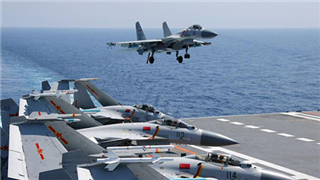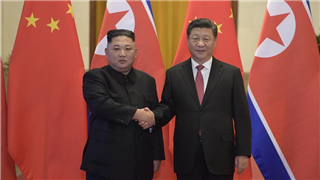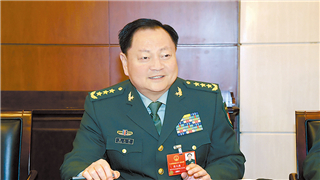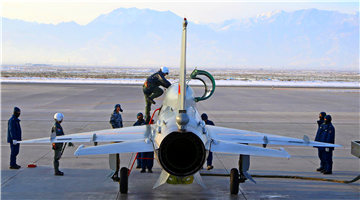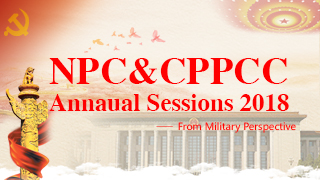The Republic of Korea (ROK) and the U.S. conducted 10 rounds of talks on the 10th Special Measures Agreement (SMA) on cost-sharing from March to December, 2018.
However, the two sides did not reach a deal due to differences in the “overall scale” of the agreement.
This will not only put the U.S. troops stationed in the ROK at the risk of a “shutdown” in 2019, but also make people doubt the future of the U.S.-ROK military alliance.
What is the Special Measures Agreement between the ROK and the U.S.
The SMA aims to solve the problem of sharing military expenses of U.S. troops stationed in the ROK between the ROK and the U.S. The ROK and the U.S. signed the "Mutual Defense Treaty" in October 1953 after the end of the Korean War.
The ROK allowed the U.S. to deploy its army, navy and air forces in the ROK territory and its surrounding waters. In 1966, the ROK and the U.S. signed the "Status of United States Armed Forces in Korea (SOFA)."
Article 5 of SOFA stipulates that the ROK provides facilities and land to the U.S. free of charge, and all other expenses should be borne by the U.S. military. Since then, the U.S. troops has been responsible for the expenses incurred in the ROK in accordance with the agreement.
In 1988, the U.S. officially submitted a defense fee sharing request to its allies including the ROK and Japan citing its fiscal deficit. The ROK government and the U.S. signed the SMA on sharing the cost of the U.S. troops stationed in the ROK in 1991. Since then, part of the U.S. military expenses in the ROK has been paid by the ROK side.
The two countries have signed nine SMA since 1991. With the rise of emerging countries and the relative decline in U.S. influence, the U.S. continues to talk about the "free ride theory", requiring its allies to substantially increase their share of defense costs.
Since 1996, the share of the ROK side has increased by about 10 percent every three years, and the amount has increased from the initial $150 million to about $860 million in 2018.
As a result of the consideration of their respective national interests, the U.S. and the ROK have always been different in the amount of defense fees, the period of the agreement, and defense cost sharing projects. The U.S. has continuously requested the ROK to increase the share of defense costs amid the negotiations.
However, the ROK side insists that it has provided a lot of direct and indirect funds to the U.S. troops and therefore the growth of defense fees borne by the ROK should be controlled as much as possible.
The Trump administration's "daylight robbery" triggers strong dissatisfaction in the ROK
The motivation for the U.S. to increase ROK’s share of defense costs is to reduce the strategic cost of maintaining its hegemony. After Donald Trump took office, he asked the ROK to increase its share of defense costs to 1.8 trillion won, which is almost the total military expenditure of 28,500 U.S. troops stationed in the ROK.
The U.S. proposed to reduce the period of the agreement from five years to one year, and insisted on the request for a new "combat support" project during the 10th round of the SMA negotiations in December 2018. The project will add the cost of the strategic weapons on the Korean Peninsula to the share of the ROK as a “combat support” fee.
The strategic weapons defined by the U.S. include nuclear-powered aircraft carriers, nuclear-powered submarines, B-1B strategic bombers, B-2 stealth strategic bombers, and F-35 stealth fighters. The operating costs of these weapons are very high. If the ROK bears the cost of such U.S. military strategic weapons, it means that its defense fees will be doubled.
There is a greater possibility that the ROK finally decides to make concessions needed to the U.S.
Currently, approximately 8,700 ROK employees provide administrative, technical and other services to the U.S. troops in the ROK. The ninth SMA expired on December 31, 2018 and if the two sides still have not reached an agreement in February this year, the ROK staff working for the U.S. troops will have to take “unpaid leave” in April. This will be the most direct consequence of the breakdown of the negotiations.
U.S. President Donald Trump wrote on Twitter for two consecutive days, putting pressure on the ROK side shortly after the breakdown of the tenth round of negotiations.
In fact, the situation on the Korean Peninsula has undergone positive changes since 2018. The security situation has evolved from a high degree of tension to a gradual easing period and the external security environment facing the ROK has greatly improved. This has somewhat reduced ROK's asymmetric dependence on the U.S and has had a certain impact on the U.S.-ROK alliance.
The U.S. stated that the size and nature of the U.S. troops stationed in the ROK remain unchanged, the ROK also claimed that the U.S. troops issue was "unrelated" to the signing of the Peace Treaty on Korean Peninsula and the Democratic People's Republic of Korea (DPRK) did not request the withdrawal of the U.S. troops stationed in the ROK as a condition for abandoning its nuclear weapons.
However, the specific issues such as the status and scale of the U.S. troops in the ROK may eventually be placed at the negotiating table and become a difficult point for consultations between the parties with the development of the situation.
For the U.S., maintaining its leadership at the lowest cost is a major strategic consideration for the Trump administration. The ROK has limited autonomy on the issue of defense fee sharing, and it is unlikely to fundamentally change the trend of defense fee increase. In this way, the ROK is more likely to make concessions.
(The author is Mu Xiaoming from the College of Politics of the National Defense University under the People's Liberation Army (PLA). It is translated from Chinese into English and edited by the China Military Online. The information, ideas or opinions appearing in this article are those of the author and do not reflect the views of eng.chinamil.com.cn. Chinamil.com.cn does not assume any responsibility or liability for the same.)
